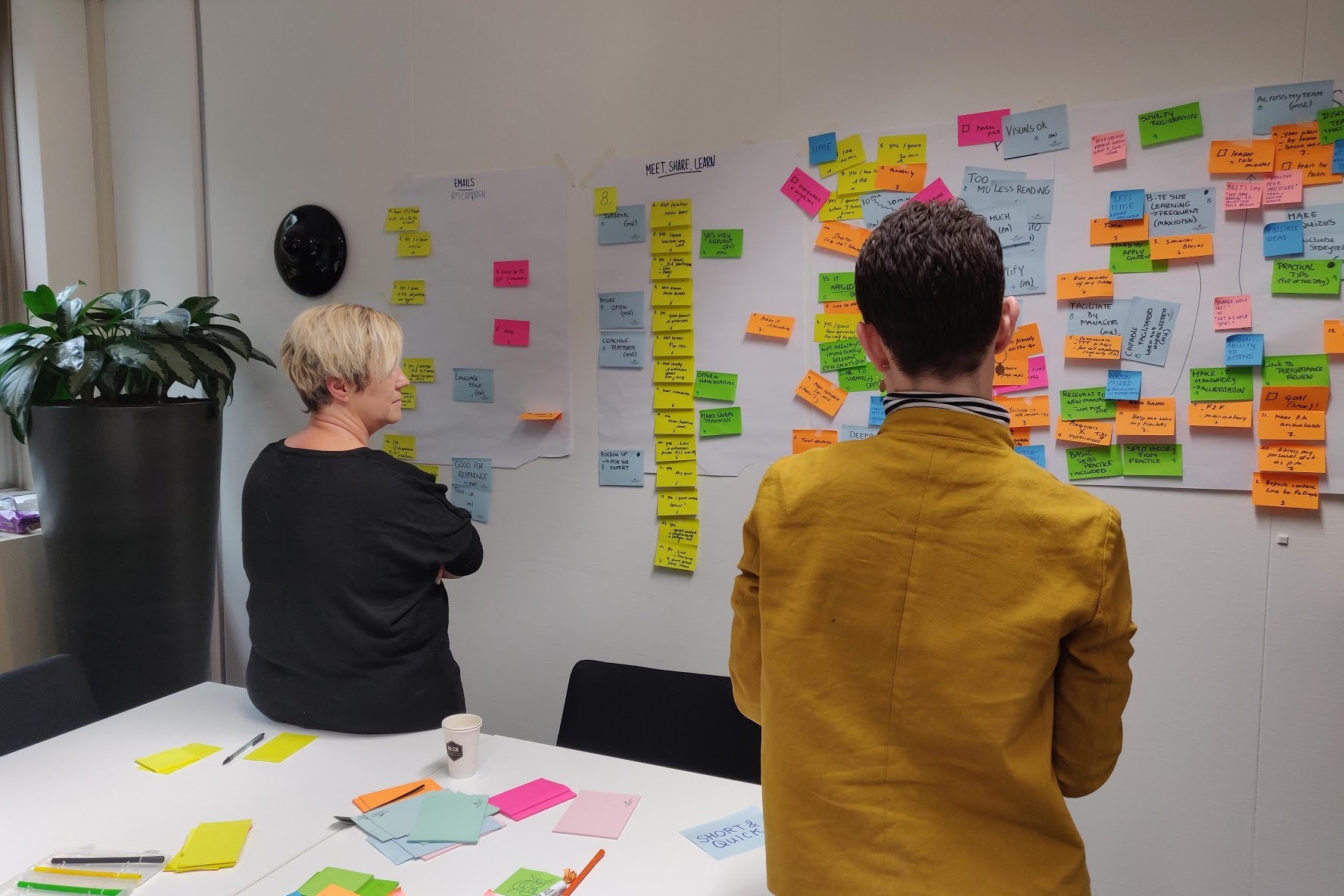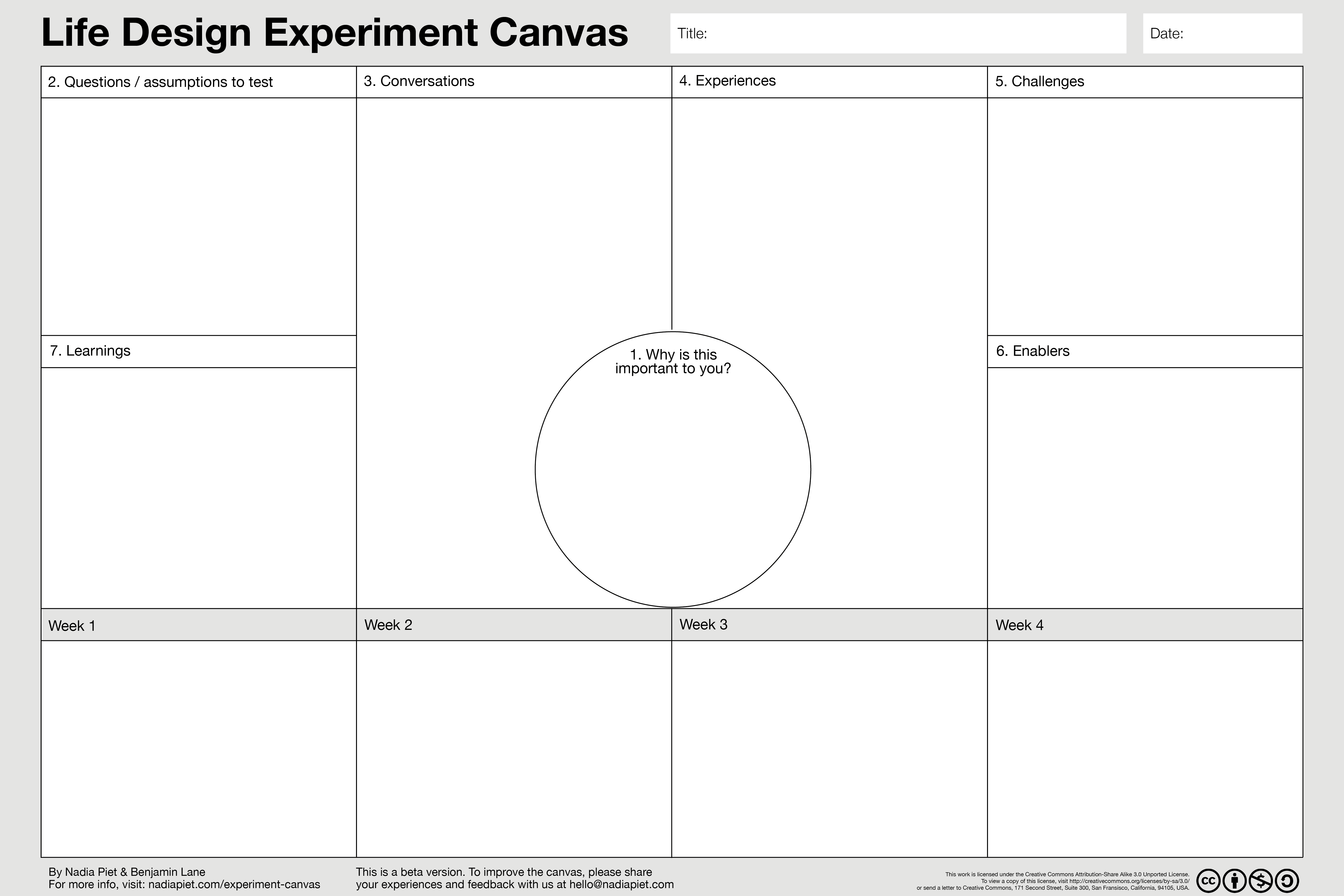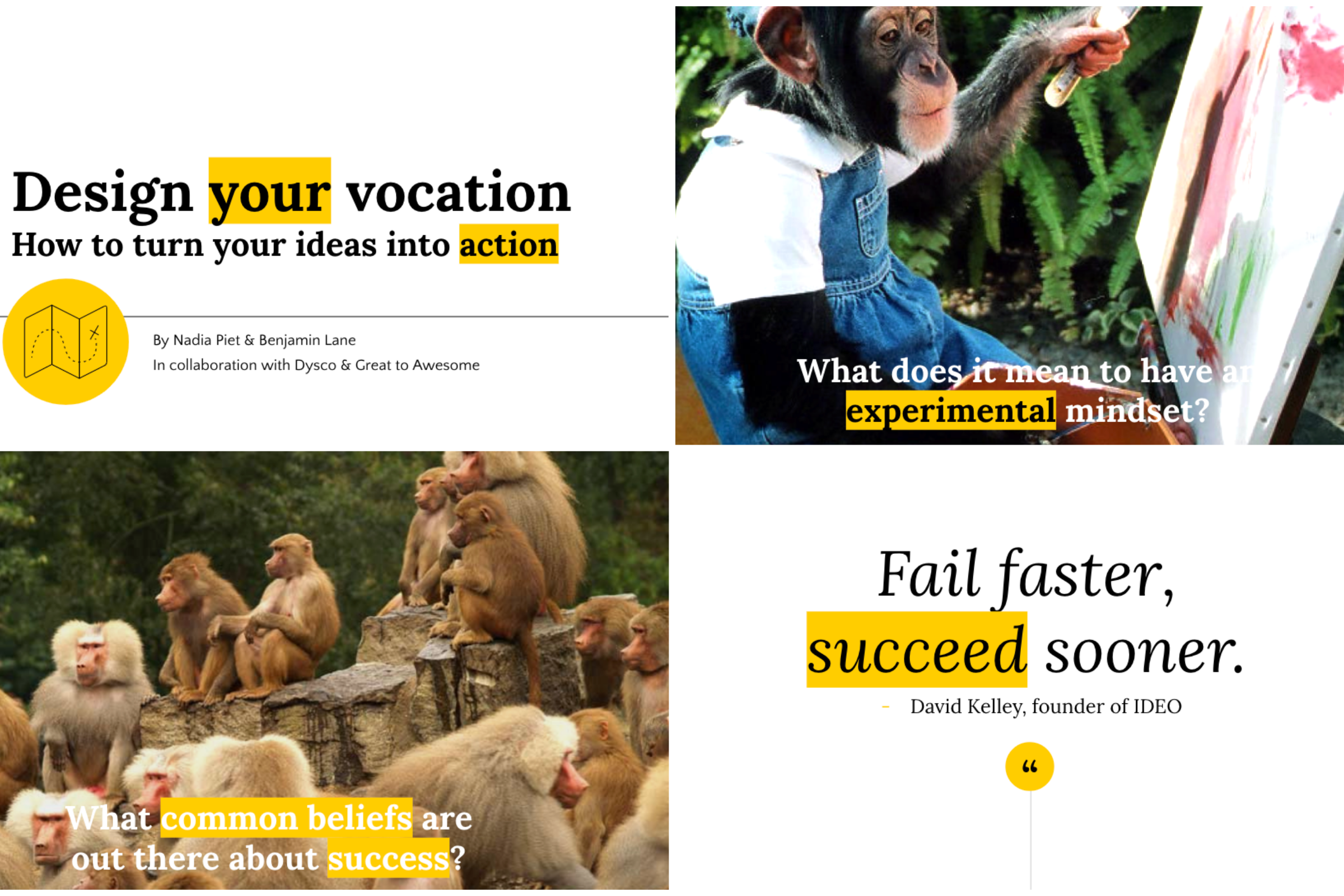Wouldn’t you like to have a life coach?
Honestly, wouldn’t we all like to have someone on our side to help us figure things out?
Life design is the practice of consciously and iteratively shaping our time here on earth. It’s about taking ownership and committing to the continuous process of exploring, directing, manifesting and enjoying the life you want to live.
Well worth the struggle – it’s a tough thing to do.
This is the exact reason people take on a (life) coach or enroll in personal growth programs.
They are there guiding you through the process of life design.
We would all benefit from a little guidance but plenty of us may not have the appropriate resources for that – money, time or otherwise – or decide to ride solo for whichever reason.
That’s why today, I’d like to give you a DIY approach to life design.
I could tell you more, or I could show you instead. Shall we?
I’ve selected over 20 hands-on life design exercises that I have found to inspire creative living and working. They will help you gain clarity on what you want, why it matters to you, and how you’re going to get there – as otherwise a coach would.
These are exercises I have collected over time and frequently turn to when coaching others, and when directing my own.
I recommend doing them on a piece of paper – although digital works too – and with few to no distractions.
Without further ado, let’s get started!
20+ DIY Life Design exercises you can do right now
-
- Ikigai
Ikigai is a Japanese word that means a reason for being, a reason to get up in the morning, and is similar to the French raison d’être.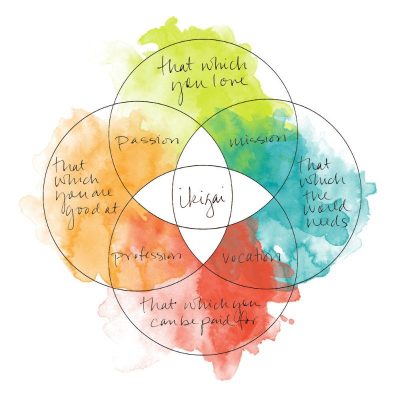 In a simplified approach, it is the sweet spot between 4 elements:
In a simplified approach, it is the sweet spot between 4 elements:
* what you love,
* what you’re good at,
* what the world needs,
* and what you can get paid for.
Draw the figure and write at least 10 key words in each circle, then formulate and find opportunities in the overlap. For more elaborate guidance, visit Aly Juma’s blog on Ikigai. - Purpose statement
A purpose statement is one sentence that declares what, who, and how you want to serve the world. As heavy as that sounds, I assure you it is not and I’m publishing a step-by-step guide on How to Craft a Purpose Statement in 2 weeks. - The Soon CV
This is an amazing exercise that I was introduced to by Lorenzo De Rita from The Soon Institute when we invited him to speak at our Intropreneurship course.
The Soon CV is a visual draft of what your resume will look like in say 5, 10, 20 years from now. Think about it: What jobs will you have had, what experiences? Where will you have lived? Will you study more, learn any new languages, other new skills? What did you achieve? What did you leave behind?
So actually draw or design that CV, your Soon CV, and have a go at answering those questions. Once you know what you want, you can reverse-engineer. - What’s your favorite flavor of shit sandwich?
The shit sandwich is about what sacrifices you’re willing to make in life. Read more on the shit sandwich concept and these 7 strange questions that help you find your life purpose both by Mark Manson, author of the contemporary classic “The Subtle Art of Not Giving a F*ck”. - What would you do if money and skill were no object?
We’ve all heard this question, but have you ever given this blue sky thinking any real thought? I think you should. - Meditative questions
A great way of active self-inquiry is by answering, perhaps by writing, what we call meditative questions. I have collected a list of 70+ Meditative Questions for you to try out.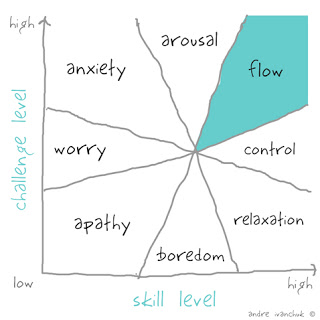
- Flow
If you’re not familiar with flow theory, have a quick read on it here. What was the last time you experienced flow state? During what kind of activities do you experience flow? How could you integrate more of these activities into your work and life? How could you make other activities more flow-inviting (i.e. by taking on more difficult challenges or by doing them with new attention)? - MVP
MVP is the abbreviation for Most Valuable Player in basketball or sports in general, but in the context of lean start-up methodologies, it stands for Minimum Viable Product. It’s about creating something that delivers the key value with minimal resources, more commonly known as a prototype, draft or even sketch.When you think about what you want to go out and do, what could be the smallest, most bare and most basic version of it? How could you implement and start testing this version of your idea, plan or change today? Although the MVP concept is mostly used in business design, it can just as well be applied to life design. - Circle 5 things
I can’t remember where I read this, but I remember its message. If you feel like you’re lacking focus and are drowning in ideas (as I usually am), this simple exercise can help. Write down without stopping a list of all the ideas and concepts floating around in your mind. Now in under 30 seconds, circle 5 things. That’s it. - Not-to-do list
In the same way we make to-do lists or weekly goals, you can incorporate not-to-do and un-goals. Try it for a week and see how it works for you. For me it has worked if it’s the type of to-do list that you keep around all the time, ….. - Design the system, not the result
If you read my newsletter, you’ve already seen the Forget About Setting Goals. Focus on This Instead post by James Clear come by. He presents a refreshing approach to the traditional goal-setting that focuses on iterative systems and focused effort rather than its direct outcomes and hitting targets.In other words: focus on the journey, not the destination; focus on the work, not the rewards. Very valuable to try out if you find yourself frustrated with your current progress. I’m experimenting with it at the moment and would love to hear how it works for you!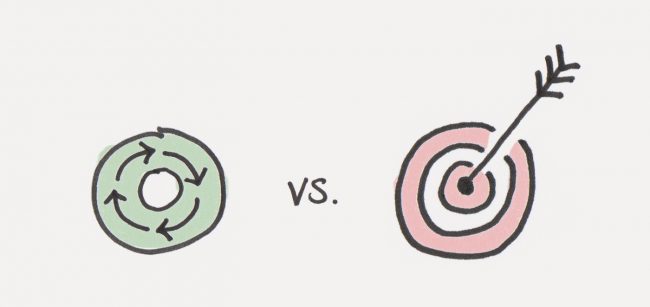
- Core values
We all generally want the same things, but don’t prioritize them all alike. When it really comes down to it, what do you choose? Truly care about? Measure yourself and other against? - Virtue chart
This was originally Benjamin Franklin’s technique but I’m sure he doesn’t mind us using it. I’ll be writing a post on this soon so until then just read Aly Juma’s post on Benjamin Franklin’s 13 Virtue Chart to get familiar with the concept. Then use your own core values from the previous excessive to draw up and keep your own chart. - Describe your perfect day
Close your eyes and visualize the moment you wake up, on your perfect day. What would your morning routine be like? How would you spend the day? Where would you spend your time? When would you work? Who would you meet with? It’s a classic exercise but I relate it strongly to Alex Wolf, who is the queen of life design and manifesting her perfect days. - Make a vision board
This is the fun part! A vision board is a collage with visual inspirations for your future. Go through either print magazines or Tumblr/Pinterest/Gram feeds and gather images that represent or symbolize your future self, your future life. How would your future self act? Speak? Think? Spend their days? What would they wear, watch, read, and listen to? Who would they spend time with?
Craft all your images into a collage and when you’re done getting crafty, keep the vision board somewhere you see it so it may remind you daily where you’re heading. You can also make boards for more specific themes like work or travel, or do them yearly either to forecast or reflect. By visualizing and giving attention to it, we are bringing it into our own and other’s awareness. Watch this amazing TED talk by Dan Gilbert on the psychology of your future self and how visualizing our future selves can help us make better decisions today. - Write a letter to your future self
We can delve further into the concept of the future self. Another way of doing this, in addition or instead of the vision board, is by writing a letter to your future self, as this Medium post by Tré Wee beautifully chronicles and inspires. - What’s your narrative?
What is the story you tell yourself and others about your life? What’s the theme you narrate your identity around? What’s your journey about? Watch this great video from The School Of Life on How to Narrate Your Life Story.
- Business Model You
This is the personal version of the infamous Business Model Canvas. The BMC is a visual tool that helps you create a comprehensive business plan in one-page, and if you’re curious you can read more about it in my post later. But for now, we’re looking at the individual translation of the BMC: the Business Model You: A One-Page Method For Reinventing Your Career, which you can use to design, instead of your business, your career.
you create a comprehensive business plan in one-page, and if you’re curious you can read more about it in my post later. But for now, we’re looking at the individual translation of the BMC: the Business Model You: A One-Page Method For Reinventing Your Career, which you can use to design, instead of your business, your career. - Momento mori
A little morbidity can go a long way. If we are fearful, the awareness of our own mortality can be a great guide. So fast forward to you laying on your death bed: what would you want to look back upon? Leave behind? At your funeral, what would you want people to say? To remember? - Energy tracker
For a week, keep a mood and energy tracker. Try to keep account of which activities, environments, people, interactions, places and objects give or which cost you(mental, physical, emotional, spiritual) energy. Of which elevate and which lower your mood. There’s a bunch of apps to do this, one is Daylio (both for Android and iOS). It’s quite an intensive process to do this for a week but if you’re thorough, the insights pay off. Once you’ve gotten into the habit of evaluating where you spend your energies, it will become as a second nature. - Sit and breathe and listen
This list wouldn’t be complete without a reference to meditation. It is true that you already have the answers inside you. You simply need to learn to listen. Although it isn’t so simple in reality, it is well-worth the effort. Sit and breathe. Be still and observe all the thoughts that emerge. Listen. If you’d like some guidance, I’m a big fan of the app Headspace by Andy ….. The first ten 10-minute sessions are free, and perfect to get you started on your meditation practice. - Last resort
If you feel without any hope and just want someone to give you the fucking answers, the guys over at WTF Should I Do With My Life will have some ideas for you.
- Ikigai
There we are.
A list of 20+ life design exercises empowering you to be your own life coach and help you build the life you aspire.
I’d love to hear about it if you try some of the exercises and how they worked for you!
If you have any suggestions to add to the list please leave a comment so we can collect all the goodies in one place.
With love,


